This week, I’m here in the Northern Portuguese city of Bragança, near to the Spanish border. ‘Why Bragança?’ I hear you ask! Well, this is the first time that we travelled to Portugal with our dog, Blake. The best way was to take the ferry from Portsmouth to Santander, so that we didn’t have to put him underneath a plane. Bragança was the first convenient city to stop off at for our Portugal road trip. It’s also near Montesinho Natural Park, which would provide us with some fantastic hikes that the dog would love. Although it’s quite small compared to Lisbon, Porto and Coimbra, the city (more like a town!) is cute with a historical centre that has medieval walls, a castle and several Churches. I found many things to do in Bragança, and today I would like to share them with you on this blog.
Disclosure: templeseeker.com is a participant in the Amazon Services LLC Associates Program and other affiliate advertising programs designed to provide a means for us to earn fees by linking to Amazon.co.uk, Get your Guide and other affiliated sites. Affiliate links may be used in this article on ‘Things to do in Bragança Portugal’, but they do not impact on the price that you pay and they do help me to get this information to you for free.
Bragança will give you a much more authentically Portuguese feel than the more international cities of Porto and Lisbon, as well as beautiful surrounding countryside for hikers.
Pronunciation of Bragança: Note that the symbol under the ‘ç’ indicates a soft c (like the French “Ça va”) and so the pronunciation is more like Bragansa – you might also see it written with a z – Braganza, which is the anglicised spelling.
When to go to Bragança
If you are interested in local customs and celebrations, then you might like to time your visit to Bragança with some of the local festivals such as the ‘Festival Do Butelo e Das Casulas’ or the Carnival of Podence. The festival of Podence is one of the most famous festivals in Northern Portugal – you will see the Caretos (people dressed up in colourful fringes and masks) parading round the streets with rattles making noise throughout the village! If you don’t time your visit with the festival, you will be able to learn about it in the ‘Museu Ibérico da Máscara e do Traje’ that is up near the castle.
Bear in mind that Bragança is quite cold in the winter (December and January) and is the snowiest city in Portugal. However, we still experienced mild weather of around 20 degrees in November. The best time to visit Bragança is the spring (when all the flowers start to bloom and the weather is mild) or summer if you want to enjoy nice weather for hiking and swimming (temperatures reach a high of 29°C).
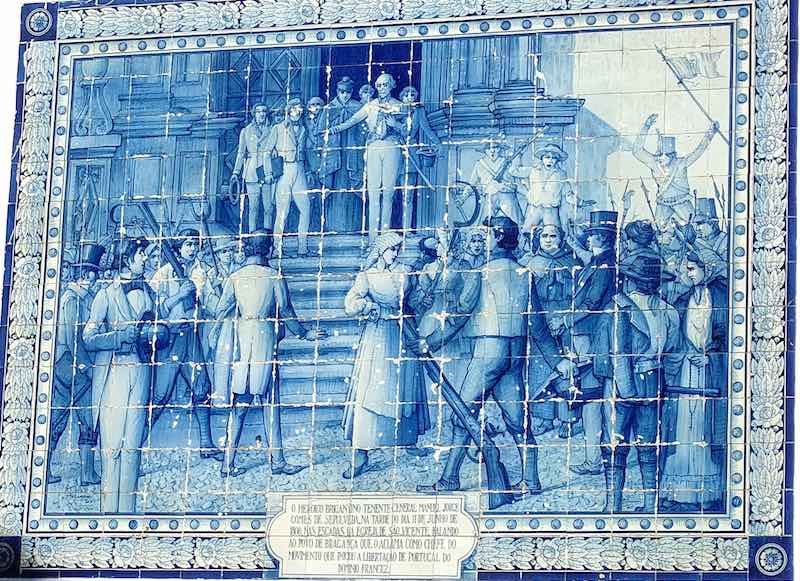
Photography copyright: All the images in this blog are original photography by Amy Green and are property of @templeseeker (unless otherwise stated). Please do not use these without permission or without giving credit. If you would like to use any of these images please email: amy@templeseeker.com for permission.
How long to spend in Bragança
The centre of Bragança itself is relatively small and easy to explore on foot. You can see the main historical centre plus the Military and Iberian Mask museum all in one day. Therefore a day in Bragança is all you really need to see the highlights. However, if you are a keen hiker and want to explore the surrounding countryside, then I would recommend adding on an extra few days to head into Montesinho Natural Park.
Recommended walking tour for one day in Bragança
If you are doing a walking trail of Bragança, I would start at the main square by Igreja da Antiga Se. Go inside the Cathedral and then head up towards the castle past the Convento do Sao Francisco. Then enter the Medieval city walls through the Porta do Sol (sun gate). You can explore Igreja de Santa Maria. The military museum inside the castle and also the Iberian Mask museum (which is inside the citadel walls). Make sure that you take some cash for these places as the Bragança museums do not accept card. Then walk down and exit through the main citadel gate, past Igreja de São Vicente and the war memorial.
Things to do in Bragança, Portugal
The most popular things to do in Bragança include the Citadel, Bragança Castle (containing military museum) and the Churches (Igreja da Antiga Se and Igreja da Santa Maria). But there are many other unexpected things to do in Bragança such as the Chestnut Museum and Museu Ibérico da Máscara e do Traje (The Mask and costume museum). I also found some great restaurants in Bragança that I can recommend for you!
Bragança Citadel – Medieval Walls
The Bragança Citadel is the old medieval walls of the city (a walled enclosure) – note that the Citadel is not the castle itself, it surrounds it and so you will find Bragança castle in the middle. The Citadel is strategically located at the top of the hill of the former Quinta de Benquerença. It is the oldest part of the city and sevred as the old the city walls, the first of which probably date back to the time of the 1st charter of the city, granted by King D. Sancho I in 1187.
In the following century, the first castle was built, by order of King D. Dinis, from which the current one was constructed. In 1377, the settlement was entirely surrounded by walls. The Fonte d’el rei (King’s fountain) and the walls around it, probably from the 15th century, during the reign of King D. Afonso V, guaranteed the water supply to the locals. The monumental ensemble of the citadel, with emphasis on the Castle, the Pillory, and the Domus Municipalis, was through the ages, a strong presence of the Portuguese identity near the Spanish border.
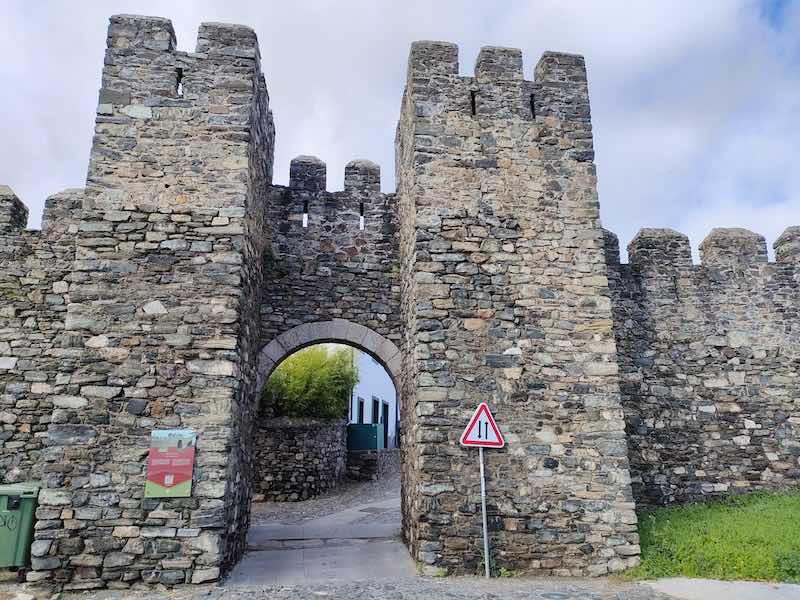
It’s nice to enter the citadel through the Porta do Sol (Sun Gate). It is so called because it faces east, and is illuminated by the first morning light. The two imposing towers protect the entrance to Fernão O Bravo street, one of the main streets of the internal space of the city of Bragança. On the opposite side of the street, you can see the Porta de Santo António (Saint Anthony’s Gate) and the Porta da Vila (Citadel’s Main Gate).
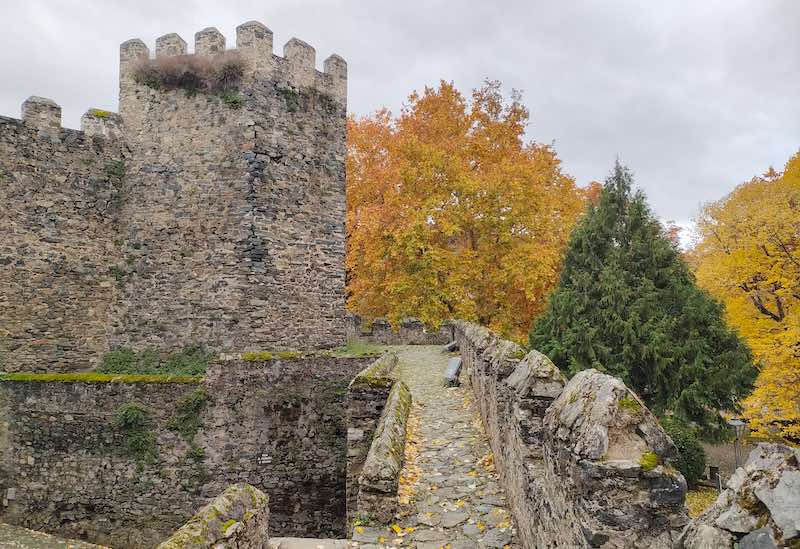
Be aware that climbing some parts of the citadel walls can be challenging with uneven ground and some uneven steps without handrails.
Bragança Castle and Military Museum
The Castle of Bragança is a medieval fortress set in a commanding position on top of the hill of the former Quinta de Benquerença. The Keep of the Castle is a prominent landmark within the walls with its 33 metres in height. It is protected by defensive towers, robust turrets and various walls. Its construction dates back to the reign of King João I, at the beginning of the 15th century, displaying the coat of arms of the Casa de Avis on the south façade, in which an ogival double window stands out.
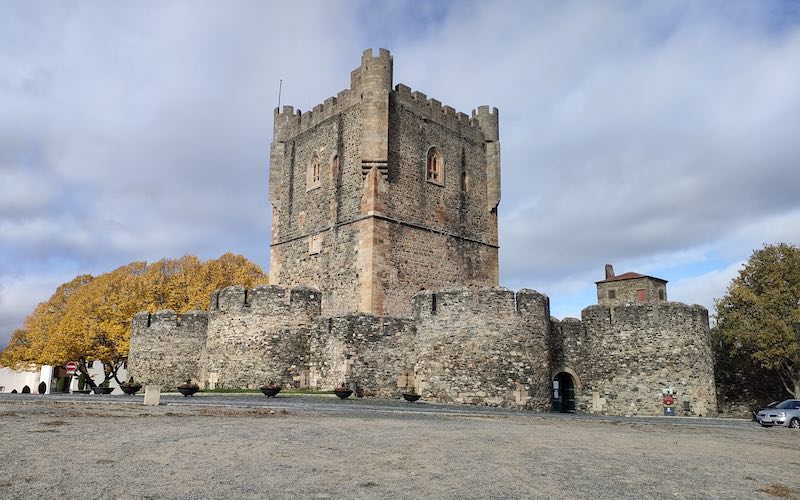
Inside, spread over the various rooms that exist throughout its five floors, is the Bragança Military Museum, where we can appreciate a valuable set of pieces that illustrate the evolution of light weapons between the 12th and 20th centuries.
On the north façade of the crenelated wall is the legendary Princess Tower which, according to popular tradition, was the prison of a princess who was in love with a brave but poor young man and, for refusing all suitors, she was condemned to live in this tower for the rest of her life.
Remember to take some Euros in cash as the military museum in the castle does not allow you to pay by card.
Museu de Castanha – Chestnut Museum
Museu de Castanha is Bragança’s ‘Chestnut Museum’. When we were in Bragança (November) it was chestnut season and we would frequently get offered free chestnuts from the locals. The chestnut museum displays local produce and will not only tell you about chestnuts but also the making of other specialities such as honey and liqueur. Museu da Castanha is free to enter and you can also book tasting sessions for small groups.
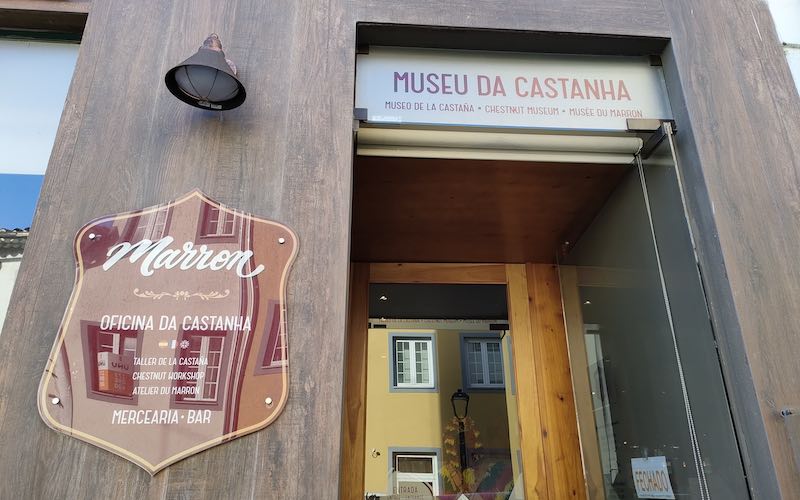
Convento do Sao Francisco
As you approach the castle (as if you are heading towards Porto do Sol), you will see the beautiful 13th century Convento do Sao Francisco on the left hand side set in front of the view of rolling hills. The convent is free to enter, so you can go in and have a look around, but photography inside is not allowed.
Convento do Sao Francisco was founded to establish the mendicant order of Saint Francis. Legend attributes its foundation to S. Francisco de Assis (Saint Francis of Assisi) himself but, in fact, the convent was built by a local noble family, as evidenced by a testamentary gift signed in 1271 by King Afonso Ill. The convent complex was rebuilt in the first half of the 17th century, as shown by its Mannerist portal. After the extinction of religious orders, in 1834, the convent underwent numerous interventions and a vast re-adaptation, to serve as the Military Hospital and the Duque of Bragança Asylum.
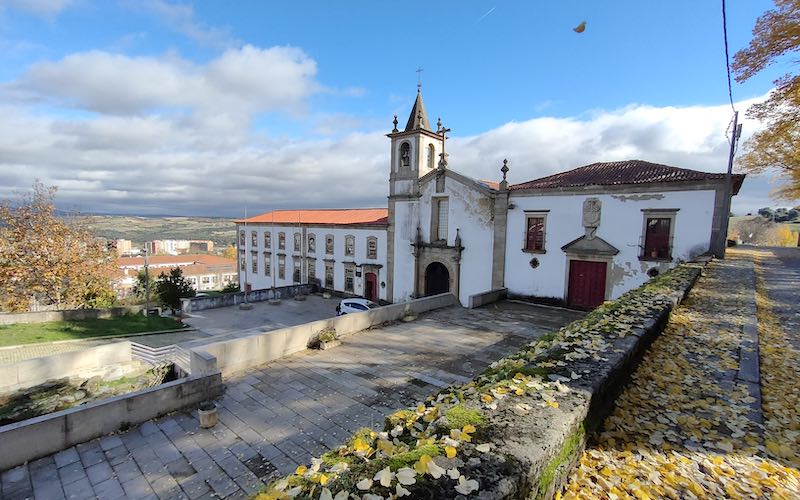
In the church, among the various altar pieces from the 18th century, the chapel of Nossa Senhora da Conceição (Our Lady of the Conception) stands out. In this chapel some rocaille applications are visible. On the high altar it is possible to admire valuable mural paintings, particularly the representation of Nossa Senhora do Manto, a subject that came to represent charitable institutions.
Churches of Bragança
There are some beautiful Churches in Bragança and there is actually a route to follow to visit all of the Bragança churches (you will see it on the door of Antiga Se). Braganca is also part of the old pilgrimage route to Santiago de Compostela and so you will see the yellow camino markings and the pilgrimage ‘Auberg’ inside the citadel walls.
Igreja da Antiga Se
The Church of Antiga Se is the old Cathedral (the current Cathedral of Bragança is a modern Cathedral). Built in the first half of the 16th Century, Igreja da Antiga Se was originally destined for a convent of nuns, but was handed over to the priests of the Campanhia de Jesus (Society of Jesus) in 1562, where they founded a college. The church, with a single nave, represents the restorations by the Jesuits in the 16th, 17th and 18th Centuries, and is a hybrid of mannerist and baroque styles. After the expulsion of the Jesuits, in 1759, the Diocesan Seminary was established here in 1768.
The 17th Century Sacristy has a panelled ceiling depicting the life of Saint Ignatius. There is also a Renaissance Cloister and a mannerist window dating back to 1685. In front of the Church you can see the Cruzeiro – an emblematic stone cross with a serpentine shaft that dates back to 1689.
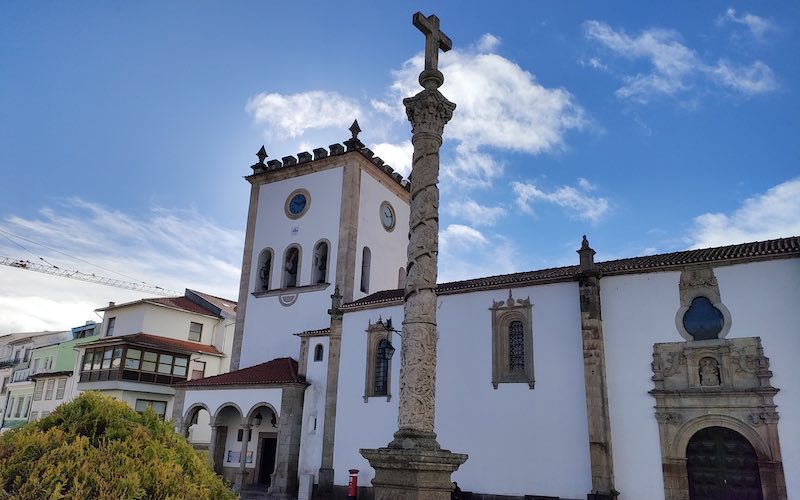
Igreja de São Bento
Igreja de São Bento (Convent of Saint Benedict) was founded by a local noble lady in 1590. The coat of arms of its founder (D. Maria Teixeira) still remains on the facade of the Church. The convent (under the protection of Santa Escolatica) was extinguished in the 19th Century, but the Church remained open for worship.
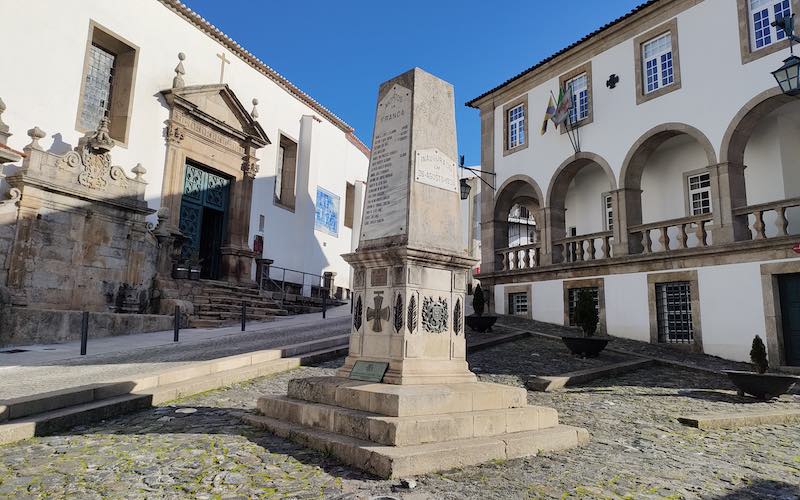
Inside the Church you can find several artistic works including the stunning trompe-l’oeil scenographic painting on the ceiling of the nave that projects the building to appear taller than it actually is. In the chancel there is a Jaonina altarpiece from 1721.
Igreja do Santa Maria
Located within the Citadel, Igreja do Santa Maria is considered one of the oldest temples in the city of Bragança, the Church of Santa Maria dates back to the beginning of the settlement (11th or 12th Century). No trace of the primitive construction dedicated, in popular memory, to Nossa Senhora do Sardão (Our Lady of Sardão) remains today, due to the reconstruction that the entire building underwent at the end of the 16th century.
The result is a large building with three naves, divided by robust arches supported by bricked columns that contrast with the white plastered walls and the gilded altarpieces of the following centuries. In the chancel, dating from the end of the 16th century, the sublime 17th century image of Santa Maria Madalena (Saint Mary Magdalene), from the school of Valladolid, stands out.
The church’s façade (shown below), from the early 18th Century, boasts an elaborate portal with twisted columns on which you will see the figures of São Pedro (Saint Peter) and São Paulo (Saint Paul).
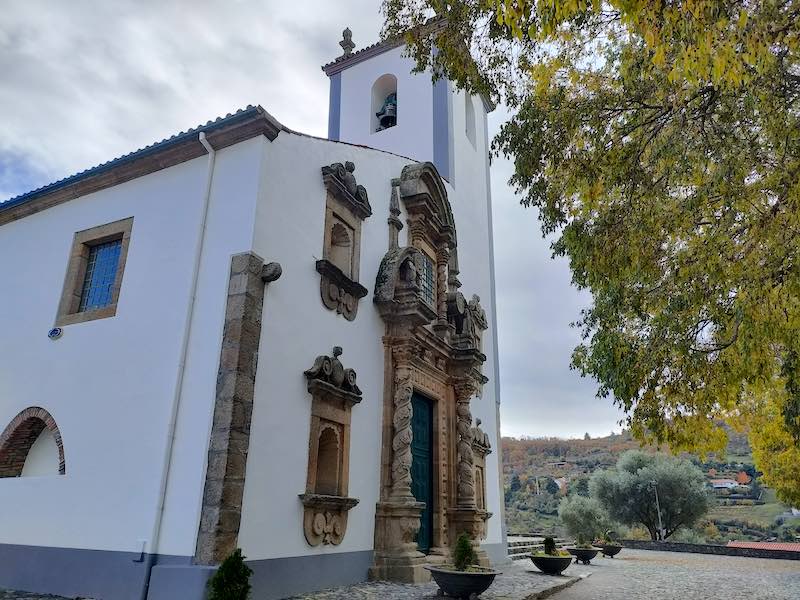
Museu do Abade de Baçal
Another interesting museum in Bragança is the Museu do Abade de Baçal, which has been housed in the building of the former Episcopal Palace since 1915. The building has its origins in the “Casas da Mitra” (16th century) prior to the transfer of the headquarters of the Diocese to Bragança, between 1764 and 1776, and served as a residence for the bishops of Miranda, during the periods when they were in the city of Bragança. After the transfer of the headquarters of the Diocese to Bragança, it became the official residence of the bishops. Since 1986, the building has been classified as a Property of Public Interest.
On the ground floor, you can see the charters of the main Trás-os-Montes towns, the papal bull that marks the creation of the Diocese of Miranda do Douro, and the collection of watercolours by Alberto de Sousa that presents us with the set of pillories that indelibly mark the centre of so many, many villages in the region. The Abbot’s Room pays homage to the founders of the Museum, with particular attention to the figure of Francisco Manuel Alves, the Abbot of Baçal, and Raúl Teixeira, who with José Furtado Montanha form the group of personalities that mark the origin of this museum space. There is also a Pre-Roman Archeology Room and Romanization room.
The second floor of the Museum invites visitors to discover the magnificent chapel of the former Episcopal Palace. This later unfolds into a succession of rooms that allow you to observe some of the most important legacies received by the Museum throughout its history. In particular, it showcases the Legacy of Colonel Ramires (numismatics), the Legacy of the Sá Vargas Family (highlighting gold-smithing and furniture) and the Cagigal collection (Portuguese faience) – and the assets acquired at public auction when the Museum was created.
The last rooms of the Museum visit, introduce us to the painting collections, including the most significant samples of naturalist painting in Portugal, with works by Silva Porto and Marques de Oliveira, but also with the presence of works by such significant artists as Veloso Salgado, Aurélia de Sousa, José Malhoa and Sarah Afonso.
The Abade de Baçal Museum has a large lawned garden, measuring around four thousand square meters, which is free to access and is available for the public to enjoy.
Tickets to the museum are 3€ (with discounts for children, senior citizens and free for unemployed people living in the European Union).
Street Art in Bragança
Bragança is also home to several interesting pieces of street art – it might surprise you to know that there are 73 pieces of street art in Bragança altogether. There is an interesting urban collage on the way up to the castle – you will find this opposite the Braganca SEF.
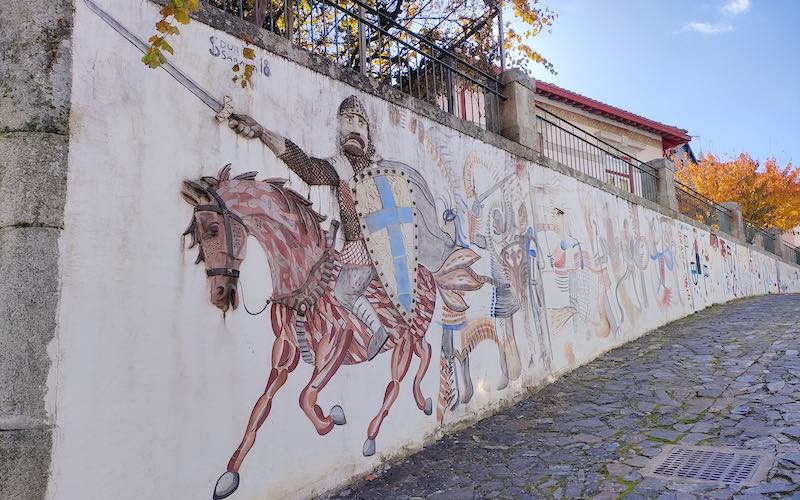
The best place for finding street art in Bragança is the Bragança Smarte street art festival, with fantastic murals waiting to be discovered up by the Bragança Lidl. The address is Rue Dr. Alexandre Faria 16. Also, look out for the purple Bragança cat!
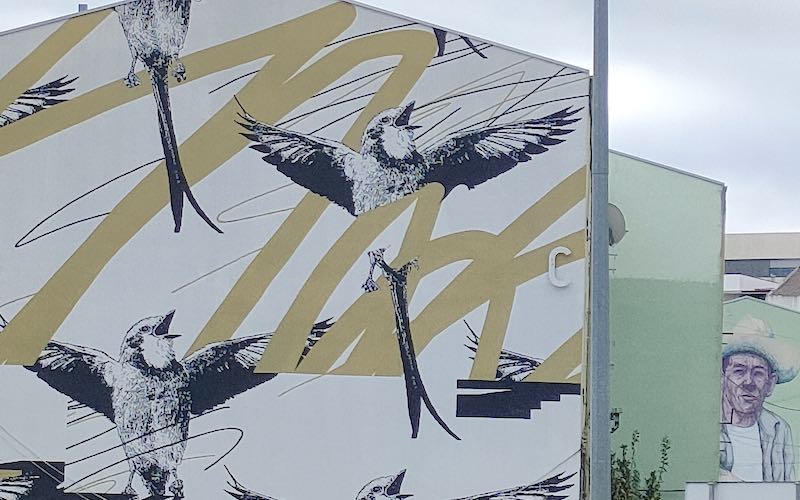
Montesinho Natural Park
Finally, if you are a budding hiker, you will love Montesinho Natural Park. This natural park in the Northeast of Portugal (to the North of Bragança) is characterised by its beautiful smooth slopes with rounded heads divided by embedded river valleys. There are 92 small villages within the park area and extensive woodlands. Vegetation in the park includes extensive cover of heather, rockroses and riverside vegetation. Wildlife found in the park includes 120 species of nesting birds, deer and even the Iberian wolf.
We did the circular hiking trail with the dog that starts and ends in Montesinho village. It’s an 8km moderately challenging hike with some uneven ground and incline. Wear sturdy walking boots and thick walking trousers (some vegetation in Montesinho can be prickly!) After your hike (which will probably take two and a half to three hours) you can end up in the Montesinho cafe for a spot of traditional Portuguese lunch.
Overall tips for visiting Bragança
- Take cash (small notes) as well as your bank card – some places in Bragança are still cash only (including the military museum and the Iberian mask museum).
- Buy some of the local Apimonte honey to take home – sweet, runny and gorgeous!
- Wear sturdy walking boots and thick walking trousers for exploring Montesinho Natural Park.
- Take a refillable water bottle (mine is a SIGG) and keep it filled up – this part of Portugal can get very hot in the summer.
- If you are visiting in the summer months, take a sun hat and sun cream.
- Churches in Bragança are free to enter – dress conservatively and switch mobile phones to silent. Respect the rules for each individual church – some state no flash on cameras.
- If you are looking for interesting day trips from Bragança, consider exploring Vila Real or heading into Spain to check out Zamora or Valladolid.
- You might like to buy the Portugal Lonely Planet – I find it helpful to have something to read at night or when on public transport when I have limited internet.
Further Reading on Portugal
If you enjoyed this blog on the best things to do in Bragança, Portugal, you might also like to read some of my other Portugal articles on the blog. Portugal is one of my favourite countries to travel and is now my second home! You might be interested in…
- Monsanto – The most Portuguese village in Portugal
- Guarda Portugal – The ultimate travel guide
- Is Aveiro worth visiting?
- Castelo Branco Portugal – The Ultimate travel guide
- Solo Travel in Portugal
- Is Lisbon worth visiting?
- Is Braga worth visiting?

